One of the world’s tallest wooden skyscrapers in the northern Swedish city of Skellefteå is home to The Wood Hotel. A new vacation magnet that benefits from the landscape, the architecture and a green vision of the future.
In Sweden’s far north, where the shortest day lasts only 3 hours and 45 minutes, a new cosmopolitan center has established itself. While the area around the city of Skellefteå was still characterized by massive out-migration until the turn of the millennium, the population is now on the rise again. So much so that the city government has set up its own immigration service for newcomers. Each newcomer is assisted with housing and bureaucratic matters and receives a welcome box with information about the region and small gifts. But what has suddenly made the former mining town so popular? The answer is an economic, urban planning and architectural success story.
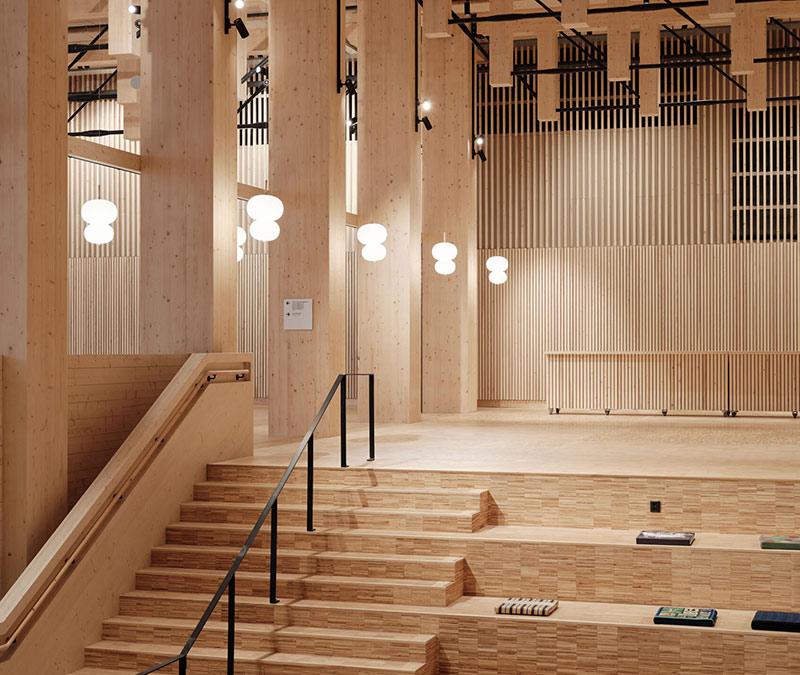
Green industry needs culture
The Swedish company Northvolt, founded by two former Tesla employees, opened the first Gigafactory for the production of lithium-ion batteries here in 2021. The demand for this is enormous. In 2020, the Fraunhofer Institute for Systems and Innovation Research ISI expected demand for such cells for electromobility alone to increase by a factor of 20 to 40 by 2030. Because the area has invested heavily in the expansion of green energies, especially hydroelectric and wind power, the company can produce in a climate-friendly way at the site. Skellefteå has thus become the flagship of a new, green industry.
“Now the question was: How do you get engineers from Germany and California to move to an area that is very cold and dark?” asks Carl Bäckstrand of White Arkitekter, who also provides the answer right away: “That led to the realization that there was a need for a cultural center that could offer people something.” Opening in 2021, Sara Kulturhus, designed by the Swedish architectural firm, is considered a pioneering achievement in structural timber engineering. With its 20 stories and a height of 80 meters, it is one of the world’s tallest skyscrapers built entirely of wood.
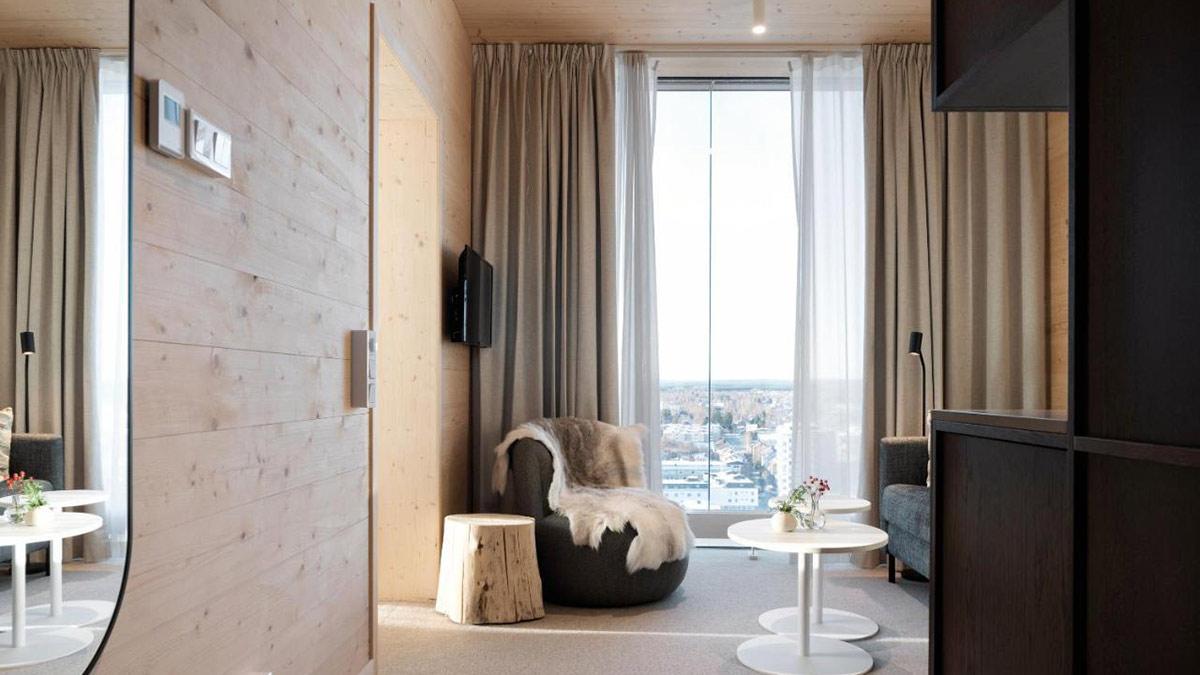
A hotel made of wood
The tower, which rises above the base floors, houses The Wood Hotel, which was to financially support the urban construction project. It belongs to the Swedish group Elite Hotels and offers guests 205 rooms and suites, three restaurants and a rooftop spa with views over the city to the surrounding forests. The building material for the spectacular wooden skyscraper comes from the region, which has a long tradition of timber construction. The abundance of wood in the interiors gives the rooms a Nordic cottage feel, even when you’re on the 18th floor.
Our hotel is a destination in its own right, which means many guests come just for the architecture and don’t discover what else the area has to offer until they get here.
Susanne Sigården, Commercial Manager at Wood Hotel
While hotels are usually booked for their proximity to attractions, this one itself is one of the biggest attractions, as Commercial Manager Susanne Sigården explains: “Our hotel is a destination in its own right, which means that many guests come just for the architecture and only discover what else the area has to offer once they are here. They are very interested in the construction of the building and enjoy the atmosphere and the smell of the wood.”
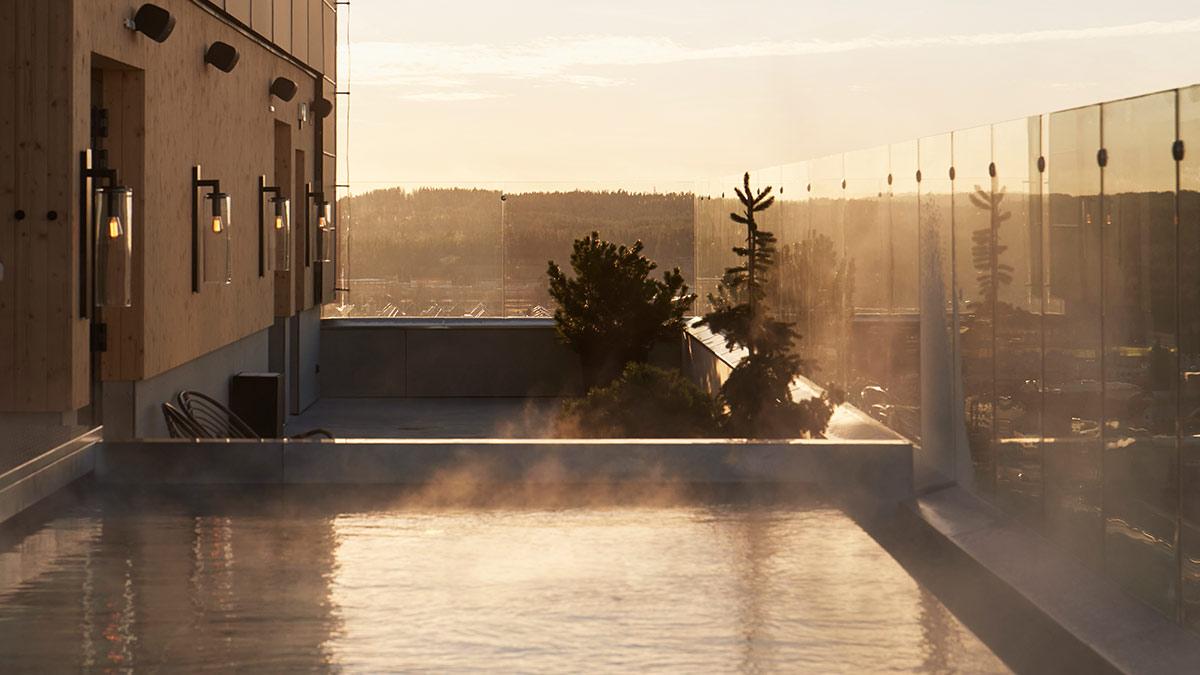
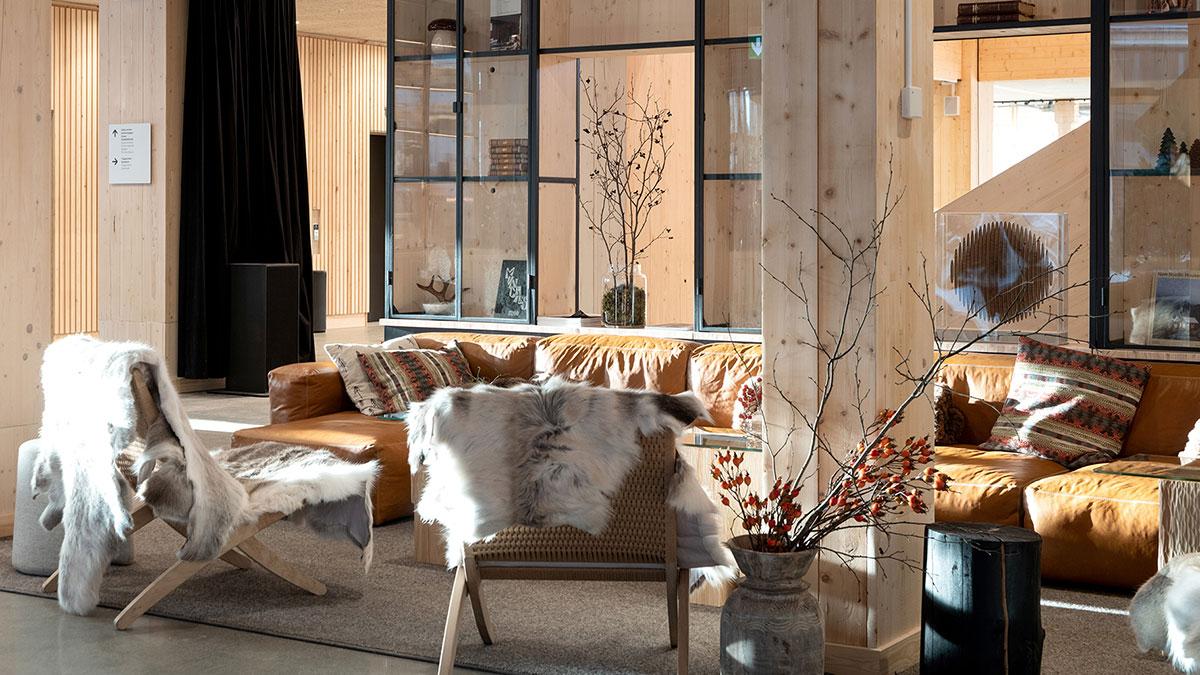
Bilbao effect under the Arctic Circle
The Wood Hotel has boosted tourism in the region and thus created another economic mainstay. In this context, one could also speak of a kind of Bilbao effect. The term refers to the economic and cultural enhancement of places through architecture. It goes back to the development of the northern Spanish city of Bilbao in connection with the Guggenheim Museum by U.S. architect Frank O. Gehry, which was completed in 1997. The building transformed the once run-down industrial city into a thriving center of cultural relevance.
For us, it’s very gratifying to see how our architecture can help shape the image of a place and the brand of a city.
White Arkitekter, architectural office
The city of Skellefteå and the Wood Hotel were chosen by “Time Magazine” as the best travel destinations in 2022. Many other publications in various glossy magazines followed and awakened the wanderlust in many. This also attracted creatives from the big cities and meant that a cosmopolitan wind is now blowing in rural Lapland – with hip cafés, art galleries and Michelin-level Nordic cuisine served in the hotel’s own restaurant Bryggargatan.
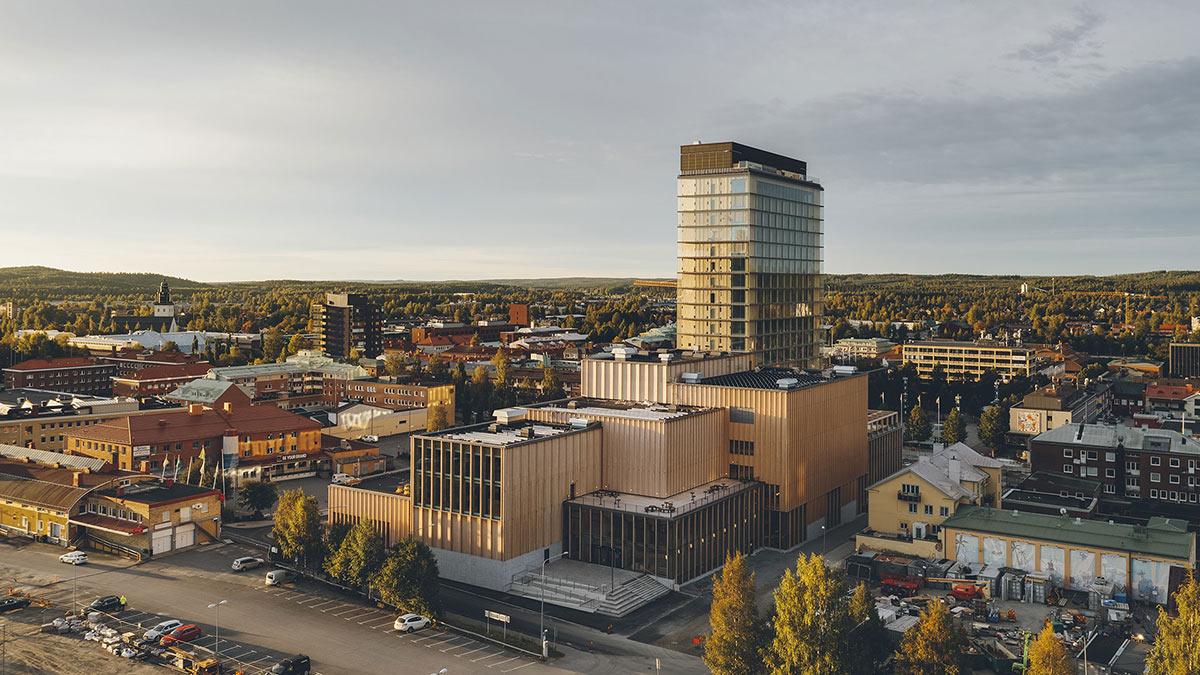
In harmony with nature
The uncompromising sustainability practiced in the city ranges from biogas-powered local transport to electric snowmobiles on which tourists cruise the expanse of Lapland without any emissions. This gives the concept of a vacation in harmony with nature a credible framing.
“It is very gratifying for us to see how our architecture can help shape the image of a place and the brand of a city,” says White Arkitekter. The success of the multi-award-winning cultural center is attributed to the integrative overall concept, as Bäckstrand explains: “Sara Kulturhus is more than just a building. It’s part of a city’s vision, part of a new economic fabric.”
Text: Gertraud Gerst
Pictures: Sven Burmann, Gustav Svanberg



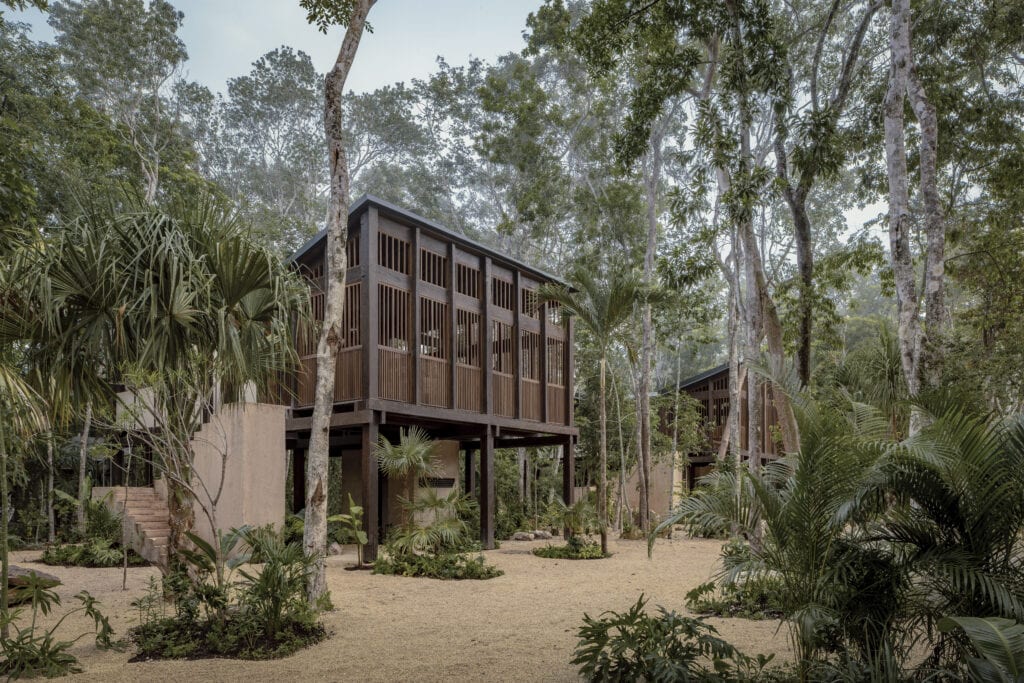
iThere are no comments
Add yours